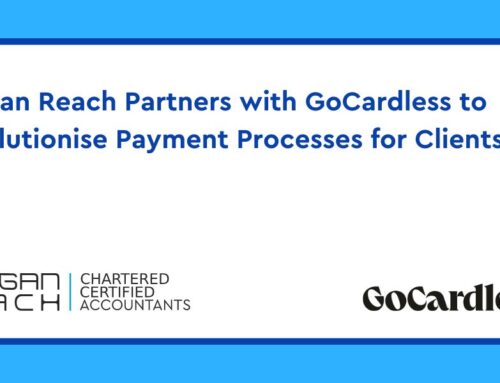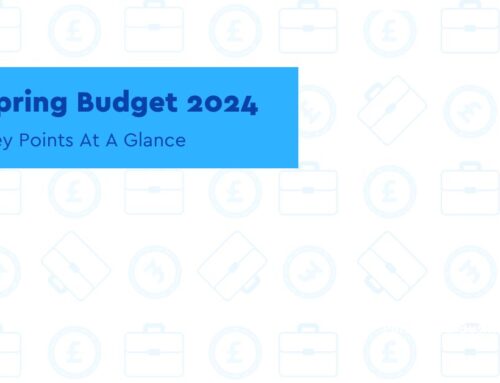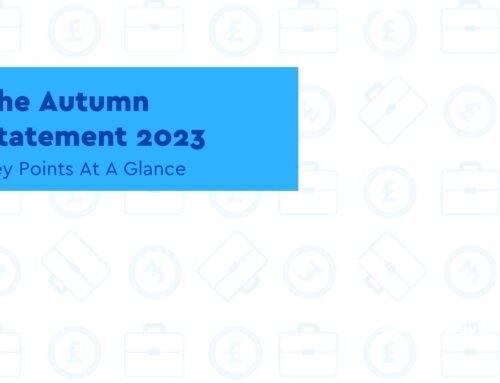News – Self-employed
Calls for clear tax registration
Key Points
- The Government has called for evidence on whether the current registration system should be reformed
- There are fears that any changes could impact many sectors, especially small businesses and sole traders
HMRC is being urged to not change the way self-employed workers register for tax but to raise awareness of the process instead.
The Government has called for evidence into taxpayers’ insight on whether the current registration system should be reformed.
Newly self-employed tax-payers and landlords, among many others, are currently required to register with HMRC to pay their income tax no longer than six months after the end of the current tax year.
There are fears that any changes to the current system could impact many sectors, especially small businesses and sole traders, causing confusion with payment deadlines and the amount of tax owed to HMRC.
John Cullinane, director of public policy at the Chartered Institute of Taxation, said:
“There is no need for HMRC to inflict significant upheaval on the newly self-employed and first time landlords with the changes to when they register to pay income tax.
“We believe that the current Income Tax Self Assessment registration process works well for most taxpayers and there is insufficient evidence to change the current statutory deadline which is six months after the end of the tax year in which the business starts.”
Setting up as a sole trader
If you’re a sole trader, you run your own business as an individual and are self-employed.
You can keep all your business’s profits after you’ve paid tax on them. You’re personally responsible for any losses your business makes. You must also follow certain rules on running and naming your business.
When you need to set up as a sole trader
You need to set up as a sole trader if any of the following apply:
- You earned more than £1,000 from self-employment between 6 April 2020 and 5 April 2021
- You need to prove you’re self-employed, for example to claim Tax-Free Childcare
- You want to make voluntary Class 2 National Insurance payments to help youqualify for benefits
VAT
You must register for VAT if your turnover is over £85,000. You can register voluntarily if it suits your business, for example if you sell to other VAT-registered businesses and want to reclaim the VAT.
There are other business structures apart from being a sole trader. For example, you can set up your own limited company. A limited company is a company ‘limited by shares’ or ‘limited by guarantee’.
Limited by shares
Limited by shares companies are usually businesses that make a profit. This means the company:
- Is legally separate from the people who run it
- Has separate finances from your personal ones
- Has shares and shareholders
- Can keep any profits it makes after paying tax
Limited by guarantee
Limited by guarantee companies are usually ‘not for profit’. This means the company:
- Is legally separate from the people who run it
- Has separate finances from your personal ones
- Has guarantors and a ‘guaranteed amount’
- Invests profits it makes back into the company
News – MTD
MTD VAT notice and guidance updated
Key Points
- All VAT-registered businesses who have not yet signed up for Making Tax Digital for VAT need to do so
- You must keep digital records from the start of your first Making Tax Digital accounting period
HMRC has published specific guidance on exactly when businesses new to MTD for VAT from April 2022 should complete the sign-up process.
All VAT registered traders must comply with Making Tax Digital VAT (MTD VAT) regulations from the beginning of their first VAT accounting period starting on or after 1 April 2022. About 750,000 traders need to sign up, including about 100,000 who should have been complying since 2019. Those that are unable to comply can apply for a digital exclusion exemption.
Signing up to MTD VAT
HMRC has published a helpful guide which explains how to work out the start date for different accounting periods.
All VAT-registered businesses who have not yet signed up for Making Tax Digital for VAT need to do so.
When to sign up
You must keep digital records from the start of your first Making Tax Digital accounting period. For a full table of dates – please click here
If you already pay by Direct Debit do not sign up too close to the date your return is due, or you may pay twice.
To avoid this, do not sign up less than:
- 7 days before your return is due
- 5 days after your return is due
If you do not pay by Direct Debit, sign up at least 3 days before your return is due.
If you’re finding it difficult to access the service, check if there’s a technical issue or other known problem.
If 1 April comes in the middle of your VAT period
If your VAT period started before 1 April 2022, you can continue using paper records until the end of that VAT period and not sign up to Making Tax Digital. Once that period has ended you must start keeping digital records.
If you sign up to Making Tax Digital in the middle of your VAT period, you will not be able to finish processing your VAT Return on your online VAT account and may be charged a penalty.
How to start keeping digital records
If you currently keep paper records such as a notebook or paper receipts, you can continue doing so.
However, from your first accounting period starting on or after 1 April 2022, you must also keep your records digitally using Making Tax Digital compliant software such as:
- accounting software
- a spreadsheet
If you choose to keep digital records on a spreadsheet, then you must also use bridging software to make sure your spreadsheet is Making Tax Digital compliant.
If you’re using a spreadsheet to keep your digital records
If you’re using a spreadsheet to keep your digital records and want to carry on, you’ll need to find a software provider that offers a bridging product that’s compatible with your spreadsheet.
You will need to talk to your software provider about how to format the information on your spreadsheet, so it sends the right information to HMRC.
What to do next
First, you’ll need to get compatible software if you have not already.
If you’ve got compatible software, then you can go and sign up for Making Tax Digital for VAT as long as you’ve come to the end of your current accounting period.
News – Pension
More savers to benefit from new pension provision
Key Points
- Collective defined contribution (CDC) pension schemes will offer a ‘third way’ for employers and savers, from August 1 this year
- CDCs work by employers and employees contributing to a collective fund from which individual retirement incomes will be drawn
People saving for retirement shouldn’t have to choose between security and affordability, according to Minister for Pensions Guy Opperman.
With the introduction of a new pension type, millions of savers can be helped to find the right balance and bring a new injection of innovation into the pensions sector.
Collective defined contribution (CDC) pension schemes will offer a ‘third way’ for employers and savers, from August 1 this year.
Speaking at the Royal Society of Arts (RSA) Collective Defined Contribution (CDC) Forum today about the road ahead for CDC schemes, the Minister highlighted how the regulations will come into force on 1st August, and discussed the ways in which the next phase of CDC schemes might be taken forward with a consultation planned later this year.
“CDC schemes have the potential to transform the UK pensions landscape and deliver better retirement outcomes for millions of pension savers,” said Opperman.
“I firmly believe that we should capitalise on the enthusiasm that is building for extending CDC to other types of pension scheme, such as multi-employer schemes and Master Trusts.
“I am keen to move quickly, but we must get this right if it is to work. That is why I am calling on all those who are seeking to deliver the full benefits of CDC to work with us to help make this a reality.”
CDCs work by employers and employees contributing to a collective fund from which individual retirement incomes will be drawn. These collective funds can be invested in what are called ‘higher return seeking assets’ over a longer period than traditional DC schemes, benefiting the growth of the fund and its members.
Currently, regulations will provide for single and connected employer CDC schemes. Some parties have already expressed an interest in pursuing multi-employer CDC schemes as an offer for their members, as well as proposals for Master Trust and CDC models which offer ‘decumulation only’ (when pension savings are converted to retirement income).
Later this year, the Department for Work and Pensions (DWP) aims to consult on a package of prospective design principles and approaches to accommodate new types of CDC schemes. This will bring the potential benefits to more savers in the UK in an appropriate way, while also capitalising on the enthusiasm industry have shown for innovation in this area.
This article was sourced from gov.uk: https://www.gov.uk/government/news/more-savers-to-benefit-from-new-pension-provision
News – Employment Allowance
Employment Allowance 2022/2023
Key Points
- This year, Chancellor Rishi Sunak has increased the allowance to £5,000
- You can only claim Employment Allowance against one of the payrolls
- How you claim depends on whether you use your own payroll software or HMRC’s Basic PAYE tools
Employment Allowance allows eligible employers to reduce their annual National Insurance liability by up to the annual allowance amount.
This year, Chancellor Rishi Sunak has increased the allowance to £5,000, meaning those that qualify can apply to lower their outgoings.
If eligible, businesses pay less employers’ Class 1 National Insurance each time the payroll has run until the £5,000 threshold is met or the tax year ends.
Only businesses, charities, carers and support workers are allowed to apply for the tax cut.
If you have or had more than one employer PAYE reference, the total employers’ Class 1 National Insurance liabilities for your combined payrolls must be less than £100,000 in the previous tax year
Payments to one-off workers, such as contractors, do not count towards the £100,000 threshold.
You can only claim Employment Allowance against one of the payrolls.
How to claim
How you claim depends on whether you use your own payroll software or HMRC’s Basic PAYE tools.
If you use your own software
To claim through your payroll software, put ‘Yes’ in the ‘Employment Allowance indicator’ field next time you send an Employment Payment Summary (EPS) to HM Revenue and Customs (HMRC).
If your payroll software does not have an Employment Payment Summary field, you can use Basic PAYE Tools.
Select your business sector under ‘de minimis state aid rules’
You must select the business sectors that apply to you, even if you do not make a profit.
Most businesses will need to select the ‘Industrial/other’ category, for example a hair salon or restaurant.
If you do not make or sell goods or services, choose ‘State aid rules do not apply’. For example if you’re a charity, an amateur sports club or if you employ a care worker.
If you use HMRC’s Basic PAYE Tools
- Select the correct name in the ‘Employer’ menu on the home page.[Text Wrapping Break]
- Select ‘Change employer details’.[Text Wrapping Break]
- Select ‘Yes’ in the ‘Employment Allowance indicator’ field.[Text Wrapping Break]
- Answer ‘Yes’ to the ‘Do state aid rules apply?’ question if you sell goods or services. Select the business sectors that apply to you. Otherwise, answer ‘No’ and select ‘State aid rules do not apply’.[Text Wrapping Break]
- Send your EPS as normal.[Text Wrapping Break]
If you make off-payroll payments
If you’re eligible for Employment Allowance but your claim is rejected, you’ll need to call HMRC’s Employer Helpline.
National Insurance rise takes effect
The Government has introduced a new health and social care levy to help cover the costs of the NHS backlog.
The 1.25% rise in National Insurance contributions (NICs) and dividend tax came into effect this week (April 6), and will apply until April 2023. After this, rates will return to their previous levels and a separate new tax of 1.25% will apply.
It is estimated that the introduction of this levy will raise £17bn a year, with the Government aiming to invest £39 billion of it into the health and social care sector over the next three years.
This means that instead of paying NICs of 12% on earnings up to £50,270 and the extra 2% on anything over, employees will now be paying 13.25% and 3.25%.
Self employed workers will see their rates go up from 9% and 2% to 10.25% and 3.25%. Some employees are exempt from paying the increase, such as apprentices under 25 years old, employees under 21 years old, armed forces veterans and employees of Freeports.
GDP nears pre-COVID levels
Gross domestic product (GDP) is now only 0.1% below pre-pandemic levels, according to estimates from the Office for National Statistics (ONS).
Following a decline of 9.3% in 2020 overall, GDP rebounded by 7.4% in 2021 overall. In the last quarter of 2021, it grew by 1.3%.
The UK’s net borrowing rate reduced to a negative 1.3% as a percentage of GDP in Q4 2021, compared to a negative 5.4% in Q3 2021.
The ONS said the main areas which contributed to the increase in Q4 2021 GDP were human health and social work, the vaccination programme and an increase in test and trace activity.
Transport and storage also grew by 7.7% in the final quarter of 2021. This was driven by the return of retail, specifically around Black Friday sales and the build-up to Christmas.
Get In Touch
At Morgan Reach, we understand every business needs a little help now and again-especially when it comes to the financial side of things. Therefore, to help our clients and visitors we endeavour to cover as much of the business news as possible. If you are self-employed or run a business and need assistance and advice on how these news could make a difference to you or your business, feel free to get in touch with the experts at Morgan Reach. Our business growth experts at Morgan Reach will guide you through what support is available for you or your business as well as the latest news that may affect you.







